1970s
The Warmlite Catalog
This 1974 sporting goods catalog decided to feature many nude models. I guess you had to live thru the 1970s to understand how this seemed a good idea.The company is still up and running.
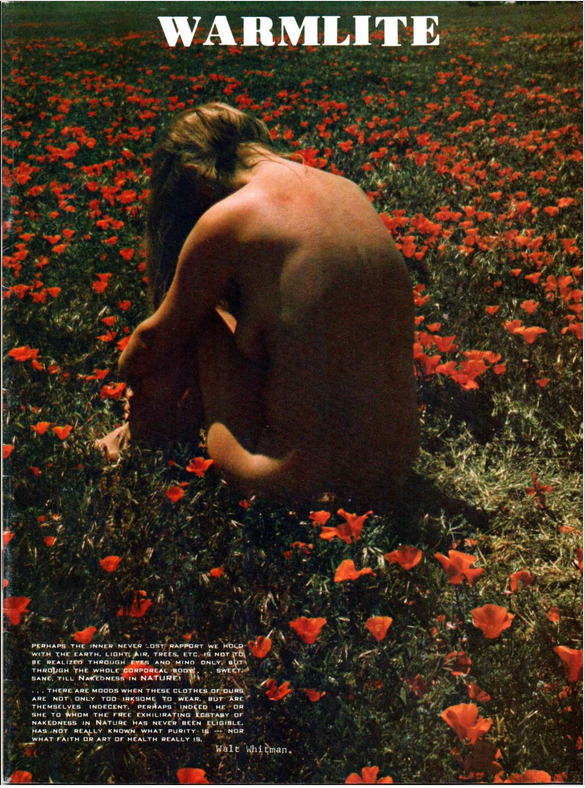

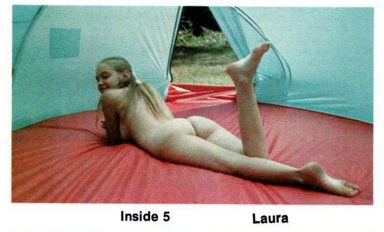
Posted By: Paul - Wed Feb 23, 2022 -
Comments (3)
Category: Publishing, Sports, Nudism and Nudists, 1970s
The replica Roman coin that fooled a museum
Nov 1971: Nine-year-old Fiona Gordon realized that the supposedly ancient Roman coin on display at the South Shields Museum was actually a promotional replica given away by a soft drinks company, Robinsons.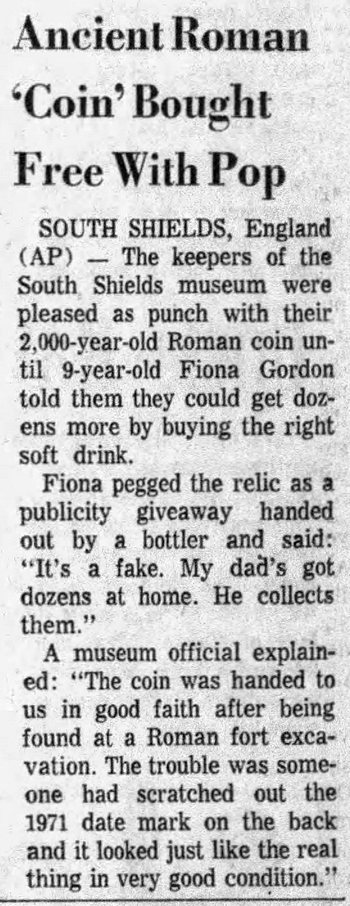
Newport News Daily Press - Nov 3, 1971
I'm pretty sure that the coin below is similar (if not identical) to the one that was on display at the museum. In 1971, Robinsons sent these coins to anyone who mailed in enough bottle caps. (Source: CoinCommunity.com)

Posted By: Alex - Tue Feb 22, 2022 -
Comments (1)
Category: Imitations, Forgeries, Rip-offs and Faux, Money, Soda, Pop, Soft Drinks and other Non-Alcoholic Beverages, 1970s, Ancient Times
The Automatic Human Jukebox
For many years, beginning around 1972, Grimes Poznikov entertained crowds at San Francisco's Fisherman's Wharf by transforming himself into the "Automatic Human Jukebox."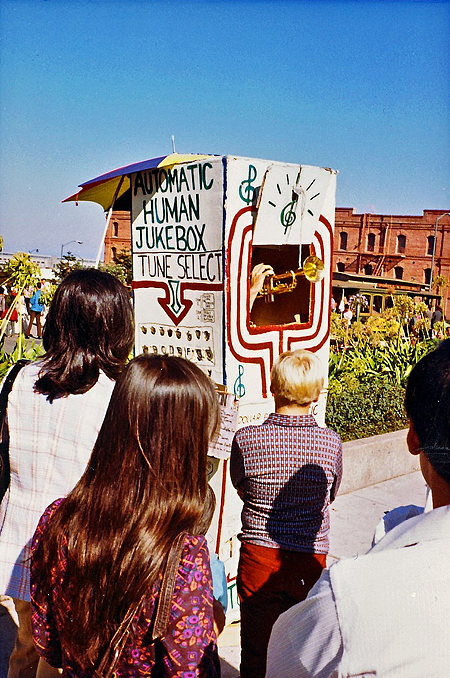
source: wikipedia
Some details about him from a 1975 syndicated article by reporter Philip Hager (The Spokane Spokesman-Review - Sep 14, 1975):
For three years, he has been delighting the throngs of visitors to Fisherman's Wharf and Ghiardelli Square, popping out of a box the size of a telephone booth to offer such selections as "Sentimental Journey," "When the Saints Go Marching In," and, inevitably, "I Left My Heart in San Francisco."
But even as a minor institution in a city with a deserved reputation for unorthodoxy, Grimes Poznikov, the Automatic Human Jukebox, has found himself facing an unceremonious eviction from the streets of San Francisco.
Poznikov's problem is that he has been cited for occupying a public street without a permit, a charge he intends to fight before a jury.
In recent weeks, seeking that elusive permit, he has been turned down by the city's Public Works Department, the Recreation and Parks Department, the Art Commission and, finally, the Board of Permit Appeals.
As a streetcorner jukebox, he doesn't fit into a tidy official category.
"I'm in a gray area, somewhere between a musician and a street artist," he explained. "The Public Works Department pointed out that under their rules I wasn't a building either."
During the height of the tourist season, Poznikov almost every day erects his seven-foot-high jukebox on the corner of Beach and Larkin, using a wire cord to anchor the structure to a nearby maple tree.
Passersby are invited to make a selection from a list of tunes Poznikov has mastered and drop in a coin. ("AHJ practices no economic discrimination," a sign announces. "However, quality... will vary automatically with the quantity of coins inserted.")
In his paper Poznikov has recorded his observations of his customers during what he calls three years worth of "ongoing demonstration of mass psychotherepeutic implementation," noting such details as "... a five to 35 second raucous laughter follows most AJH actuations."
Passersby, he has written, first refer to the jukebox in "non-personified pronoun terms" ("it") then, upon his emergence horn in hand, they speak of it as a "living component" ("he").
Poznikov regards the Automatic Human Jukebox as an experimental art form, patiently explaining to a puzzled questioner, "I want to legitimize and advance the system of non-verbal communication... the people who come here can interact with the jukebox, participate in the process of making music."
According to wikipedia, he ended up dying homeless on the streets in 2005. His life inspired a short opera titled Broken Jukebox which premiered in Jan 2008 at College of Marin.
Posted By: Alex - Mon Feb 21, 2022 -
Comments (2)
Category: Eccentrics, Outsiders, Marginals, the Excluded and Low-castes, Music, Performance Art, 1970s
Nuclear Tunneling
One of the projects that researchers at Los Alamos have worked on is a 'subterrene'. This is a nuclear-powered tunneling machine capable of boring through solid rock at high speed by melting the rock. They were granted a patent (No. 3,693,731) for this in 1972.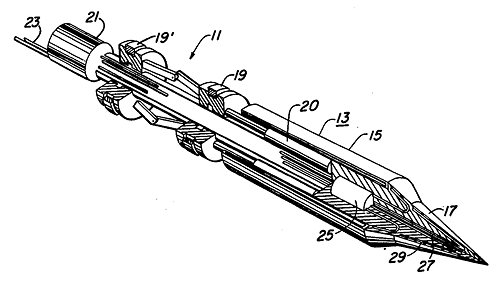

There's some info about this (as well as it's possible use on the Moon or Mars) in the book Terraforming Mars:
The same technology was proposed by Joseph Neudecker and co-workers, in 1986, as a means by which tunnels might be bored upon the Moon in order to construct a subsurface transportation system. Describing their nuclear-powered melting machine as a SUBSELENE, Neudecker et al. calculate that a fission-reactor-heated, 5-m diameter tunneler could be made to advance by as much as a 50-m per day through the lunar subsurface. This tunneling, they argued could (indeed, must) be operated remotely. Importantly, for tunnel coherence and stability, the material melted at the front of the SUBSELENE would be extruded at its backend to form a glass lining on the tunnel wall.
Wikipedia has an article about the Subterrene, noting the rumor that the Soviets actually built such a device which they called the "battle mole".
Posted By: Alex - Sat Feb 19, 2022 -
Comments (1)
Category: Caves, Caverns, Tunnels and Other Subterranean Venues, Patents, Atomic Power and Other Nuclear Matters, 1970s
Two Richard Nixon Chess Sets
In 1971, when Nixon was still flying high, he got the honor of his own adulatory chess set.In 1973, he got one devoted to Watergate.

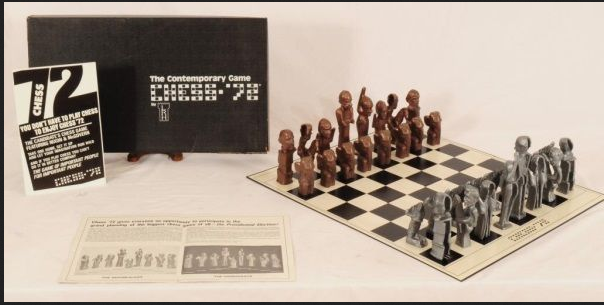
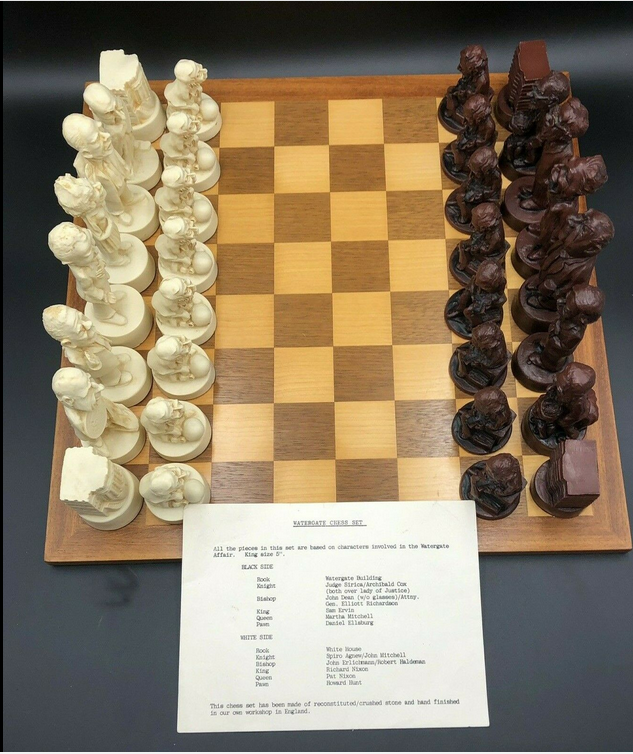
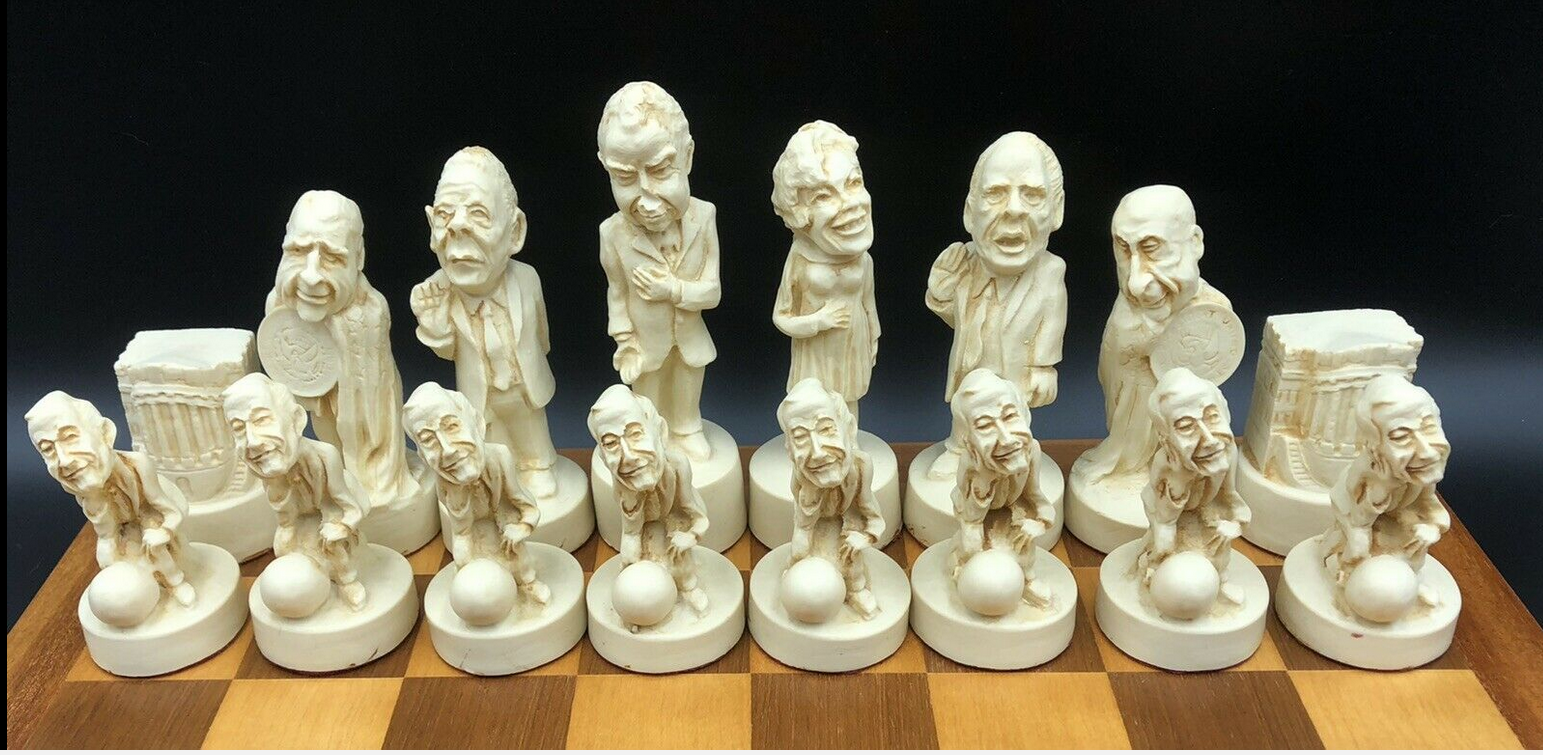

Posted By: Paul - Wed Feb 16, 2022 -
Comments (2)
Category: Games, Politics, Disgrace, Shame, Infamy and Downfalls, 1970s
Merrill Township Community Center
In 1977, the construction of the Merrill Township Community Center in Michigan was almost complete. However, it was located in the middle of a forest, and no funds remained to build a road to it. Nor was there a parking lot. So the building sat empty, never used, until the roof collapsed two years later during a snow storm.It seems that Merrill Township eventually got a community center built in a more accessible location. They don't mention the old community center on their website. The ruins must still be out there in the woods.

York Daily Record - Aug 24, 1977
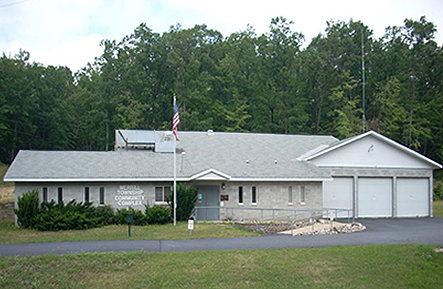
The new Merrill Township Community Center
Posted By: Alex - Fri Feb 11, 2022 -
Comments (6)
Category: 1970s, Ruins and Other Abandoned or Shuttered Structures
Longest fall without a parachute
We've recently had a couple of posts about people surviving long falls. So this post (originally from Jan 2021) seemed relevant.On January 26, 1972, stewardess Vesna Vulovic was working on a Yugoslav Airlines flight when a bomb blew up the plane. She fell 31,000 feet and miraculously survived. No one else on the flight did. She eventually made a near-full recovery and went back to work at the airline, though not as a stewardess. She died in 2016. To this day, she maintains the world record for having made the longest fall without a parachute.

Pittsburgh Press - Jan 29, 1972

Vesna Vulovic. Source: wikipedia
Vulovic is part of a small group of human marvels who have survived very long falls. Another member of this group is English tail gunner Nicholas Alkemade who, in 1944, survived a fall of 18,000 feet out of a Lancaster bomber.
The question of how people are able to survive very-high falls has attracted some scientific interest. The most famous study on this topic, that I'm aware of, was published by Hugh De Haven in 1942: "Mechanical analysis of survival in falls from heights of fifty to one hundred and fifty feet". I've pasted a summary of his study below, taken from Newsweek (Aug 24, 1942). But basically his conclusion was that, if you're falling a long distance, hope that something breaks and cushions your fall.
Obviously, De Haven couldn't subject human guinea pigs to experimental accidents in a laboratory. Instead, he analyzed the records of some remarkably lucky and well-documented falls—cases where men and women dropped from as high as 320 feet (the equivalent of 28 stories) and survived. A few of them:
--A 42-year-old woman jumped from a sixth floor. Hurtling 55 feet, she landed at 37 miles an hour on her left side and back in a well-packed plot of garden soil. She arose with the remark: "Six stories and not even hurt." Her body had made a 4-inch hollow in the earth.
--A 27-year-old girl dropped from a seventh story window and landed head first on a wooden roof. She crashed through, breaking three 6- by 2-inch beams, and dropped lightly to the ceiling below. None of her neighbors knew about the fall until she herself appeared at the attic door and asked assistance. And although one of her vertebrae was fractured, the girl was able to sit up in bed the same day.
--Another woman fell 74 feet, landing flat and face down on an iron bar, metal screens, a skylight, and a metal-lath ceiling. The impact made a 13-inch bend in the 1.5-inch bar, but she suffered only some cuts on her forehead and soreness about the ribs. She sat up and climbed through a nearby window.
--After a 72-foot drop, a 32-year-old woman landed in jackknife position on a fence of wire and wood. She picked herself up and marched to a first-aid station but was unhurt.
--A 27-year-old man fell 146 feet onto the rear deck of a coupe. Some of his bones were broken, but he remained conscious and was back at work within two months.
--A man dropped from a 320-foot cliff to the beach below, bouncing from a sloping ledge halfway down. Although his skull was fractured, he fully recovered. DeHaven noted that the man wore a large coat, which may have slowed his fall by a slight parachute action.
--A woman fell seventeen floors onto a metal ventilator box, landing in sitting position and crushing the metal downward 18 inches. Though both arms and one leg were broken, she sat up and demanded to be taken back to her room.
In this evidence, De Haven observed that (1) in each instance the blow was distributed over a large area of the body, and (2) the fall was not halted abruptly—in the ventilator case, for example, it was slowed through a distance of 18 inches and the impact was thus decreased. Even so, she had survived a force of more than 200 times gravity. By contrast, a person slipping on a sidewalk might crack his skull because hitting the unyielding concrete pavement generated a force of more than 300 times gravity.
Posted By: Alex - Sat Feb 05, 2022 -
Comments (3)
Category: Human Marvels, World Records, 1970s
The Haus-Rucker-Co Live Exhibition
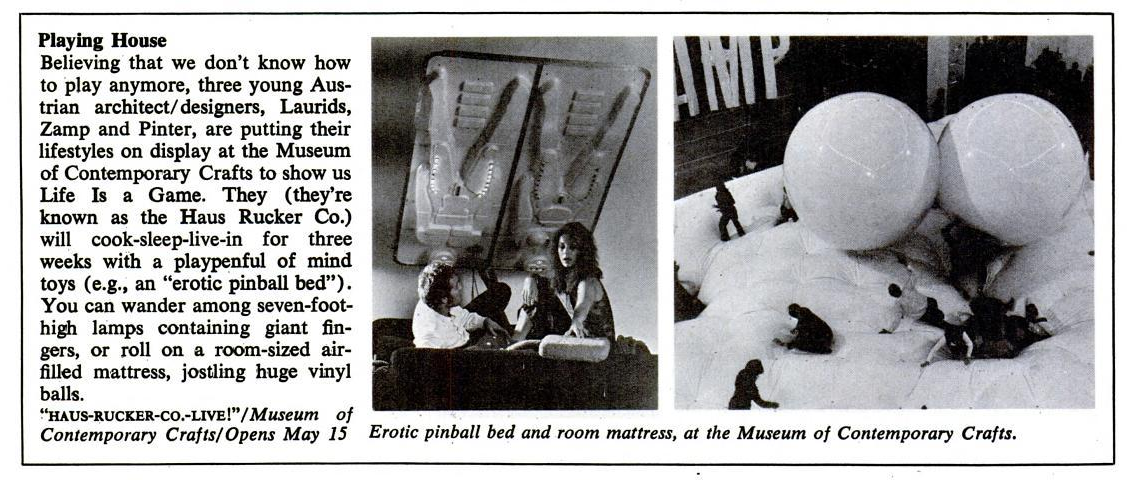
Source.
View the official catalog for this happening here.
One of the catalog pages below.
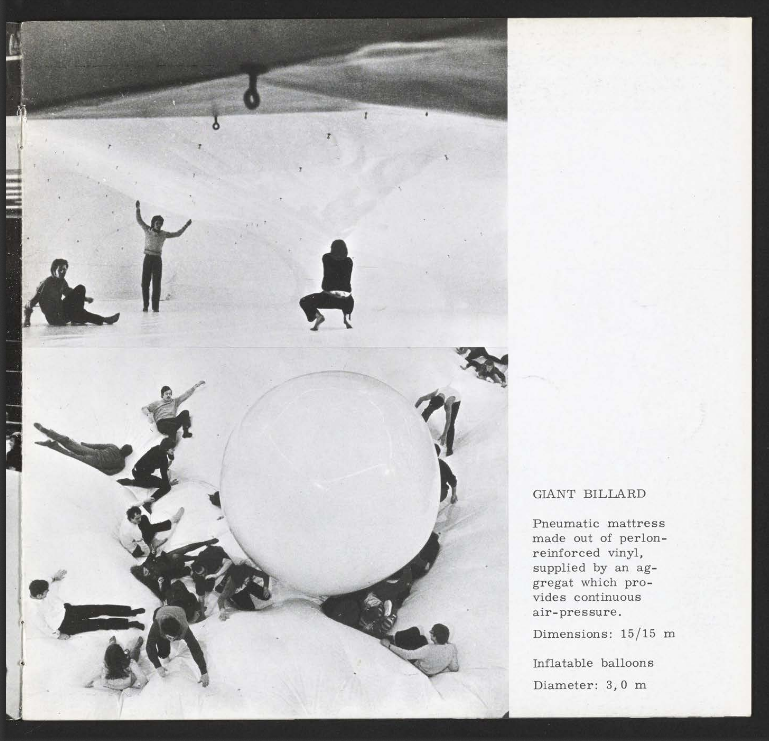
Posted By: Paul - Fri Feb 04, 2022 -
Comments (0)
Category: Art, Avant Garde, Pop Art, Museums, 1970s
Surviving a fall from the Empire State Building
Two people have jumped from the observation deck of the Empire State Building, intending to commit suicide, and survived.The first was Thomas Helms, a 27-year-old artist from Hawaii. He jumped on Dec 22, 1977, but the winds blew him onto a ledge 15-feet below. After lying stunned for a while, he managed to crawl back inside through a window.
The second survivor was Elvita Adams of New York City. She jumped on Dec 2, 1979, but again the wind blew her back toward the building, depositing her on a balcony on the 85th floor. A security guard noticed her there and pulled her back inside.
For whatever reason, the case of Elvita Adams attracted more attention. It inspired an off-Broadway one-man show, "I've Been Elvita Adams," which didn't get good reviews.
Based on these two cases, windy days in December would seem to be the best days for surviving a jump from the Empire State Building.
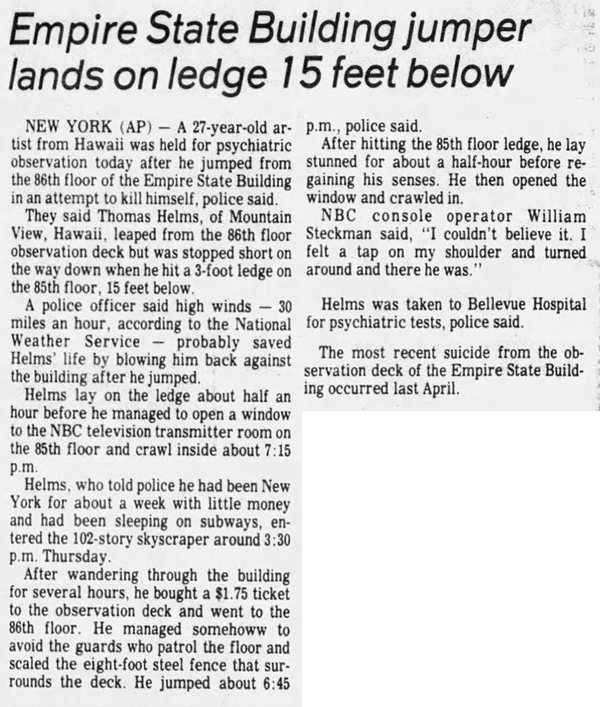
Bridgewater Courier-News - Dec 23, 1977

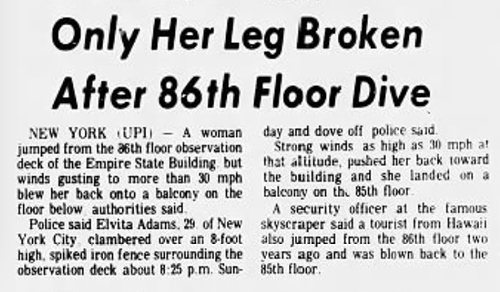
Provo Daily Herald - Dec 3, 1979
Posted By: Alex - Tue Feb 01, 2022 -
Comments (4)
Category: Death, Suicide, 1970s
Wine Bottle Dust
A gag gift sold to wine lovers back in 1979.Given how many wineries, with attached gift shops, have sprung up in the past twenty years, I think this would sell even better today. An opportunity awaits for an entrepreneur.

Alexandria Town Talk - Apr 19, 1979
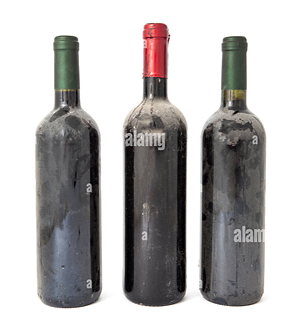
Posted By: Alex - Mon Jan 31, 2022 -
Comments (3)
Category: Imitations, Forgeries, Rip-offs and Faux, Inebriation and Intoxicants, 1970s

| Who We Are |
|---|
| Alex Boese Alex is the creator and curator of the Museum of Hoaxes. He's also the author of various weird, non-fiction, science-themed books such as Elephants on Acid and Psychedelic Apes. Paul Di Filippo Paul has been paid to put weird ideas into fictional form for over thirty years, in his career as a noted science fiction writer. He has recently begun blogging on many curious topics with three fellow writers at The Inferior 4+1. Contact Us |




